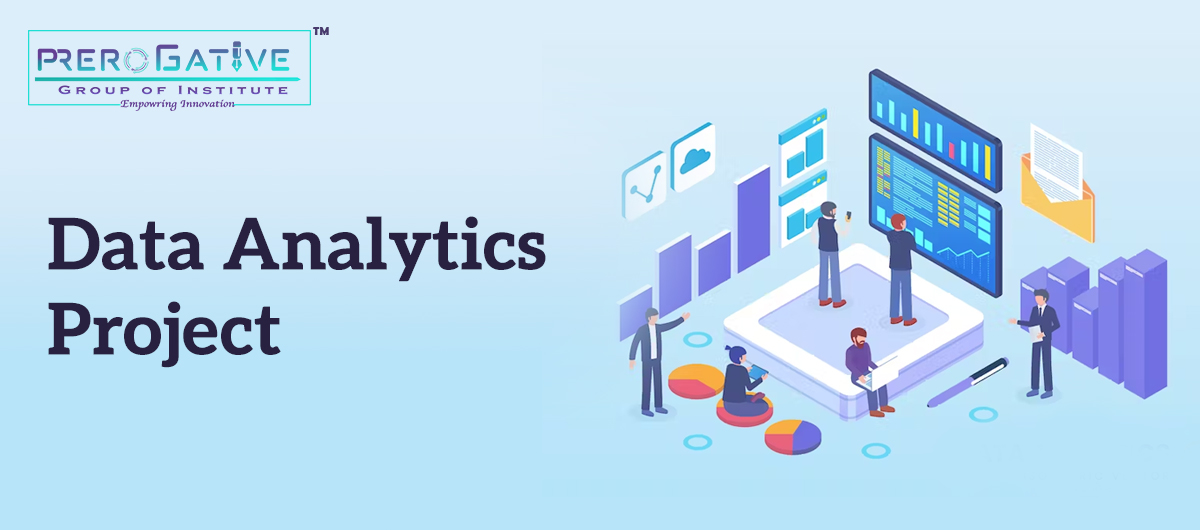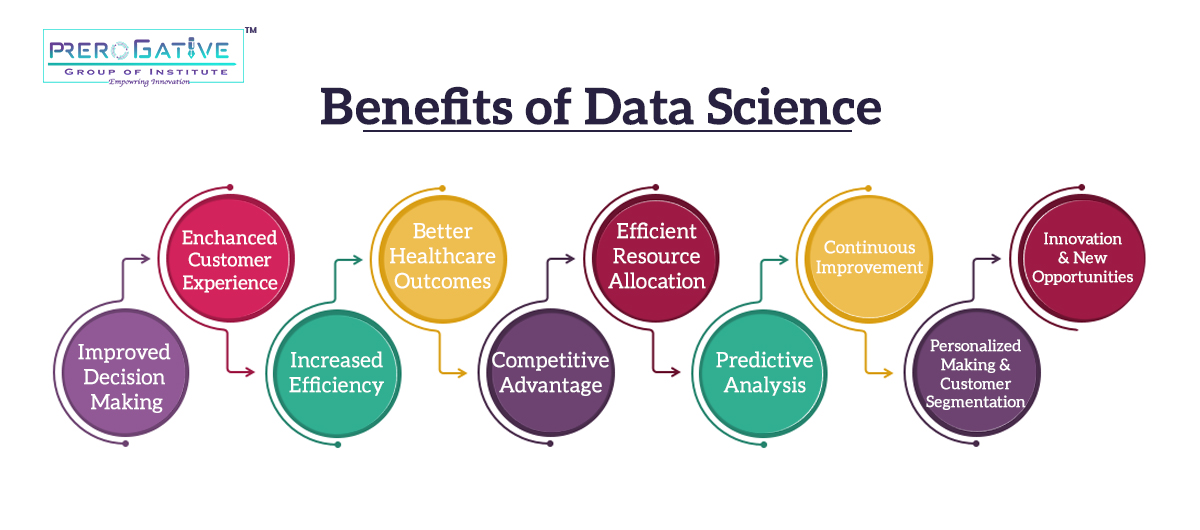20 Best Data Analytics Projects for all levels

Data analytics is a rapidly evolving field that offers immense opportunities for individuals of all levels of expertise. Whether you're a beginner looking to explore the world of data or an experienced analyst seeking to enhance your skills, engaging in practical projects is crucial for honing your data analytics abilities.
This blog will present 20 data analytics projects suitable for all skill levels, each designed to provide hands-on experience and foster a deeper understanding of data analysis techniques. We understand the importance of data analytics for students, and our selection of projects is designed to provide valuable learning opportunities and skill development in this field.
Table of Contents
- Projects on Data Analytics in 2023
- Exploratory Data Analysis (EDA)
- Predictive Modeling with Regression
- Classification Using Machine Learning
- Time Series Analysis
- Social Media Sentiment Analysis
- Customer Segmentation
- Market Basket Analysis
- Fraud Detection
- Recommender Systems
- Text Mining and Topic Modeling
- Network Analysis
- Web Scraping and Data Extraction
- A/B Testing
- Customer Churn Prediction
- Image Classification
- Geographic Data Analysis
- Data Visualization Dashboards
- Natural Language Processing (NLP) for Text Generation
- Social Network Analysis
- Big Data Analytics with Apache Spark
- Conclusion
- Frequently Asked Questions
Projects on Data Analytics in 2023
Data analysis projects encompass a wide range of techniques and applications to extract insights and make informed decisions from data. PreroGative's Data Analytics Internship offers an exciting opportunity for aspiring data analysts to gain hands-on experience through their 20 Best Data Analytics Projects. Through these projects, interns can develop essential skills, work on real-world datasets, and contribute to meaningful insights, preparing them for a successful career in the field of data analytics.
Now, let's dive into the details of each project.
- Exploratory Data Analysis (EDA): Exploratory Data Analysis (EDA) is crucial in any data analytics project. It involves performing descriptive statistics and data visualization techniques to gain insights from a given dataset.
Example: Let's say we have a dataset containing information about housing prices. Through EDA, you can calculate summary statistics like mean, median, and standard deviation to understand housing prices' central tendency and dispersion. Additionally, visualizations such as histograms and box plots can provide a visual understanding of the distribution of prices and identify any outliers present in the data.
- Predictive Modeling with Regression: To create prediction models, regression analysis is a potent tool. Regression methods like linear regression or decision trees can be used to predict an outcome based on past data for a dataset with a continuous target variable.
Example: Using information on a student's study habits, socioeconomic status, and prior grades, for instance, we could forecast how well they would perform on their final test. The relationship between these variables and the exam results can be determined using regression prediction techniques, which enables educators to comprehend the effect of study time on student performance.
- Classification Using Machine Learning: Classification tasks involve categorizing data into different classes or groups. Delve into machine learning algorithms like logistic regression, support vector machines, or decision trees to develop classification models.
Example: Let's consider sentiment analysis in customer reviews. We can use machine learning algorithms to classify reviews as positive, negative, or neutral based on the sentiment expressed. This analysis provides insights into customer feedback and helps businesses make informed decisions.
- Time Series Analysis: Time series analysis focuses on analyzing data points collected over time.
Example: Suppose we have a monthly sales data dataset for a retail store. We can identify patterns and seasonality by applying time series analysis techniques such as ARIMA or exponential smoothing and forecast future sales. This analysis assists in inventory management, resource allocation, and demand planning.
- Social Media Sentiment Analysis: Extracting sentiment from text data, particularly on social media sites, is the task of sentiment analysis.
Example: Think about a collection of tweets on a specific product. We can extract sentiment from tweets using natural language processing techniques and categorize them as positive, negative, or neutral. This investigation sheds light on consumer satisfaction, brand reputation, and public perception.
- Customer Segmentation: Customer segmentation is crucial for businesses to understand their customer base better.
Example: Suppose we have a dataset containing customer information such as age, income, and purchase history for an e-commerce company. By applying clustering algorithms like k-means, we can group customers into segments based on their similarities. This segmentation helps tailor marketing strategies, personalized product recommendations and improve customer satisfaction.
- Market Basket Analysis: Market Basket Analysis focuses on uncovering associations and patterns in transactional data.
Example: Consider a dataset of customer transactions at a grocery store. We can frequently identify co-purchased items by applying association rule mining algorithms like Apriori. This analysis helps cross-selling, optimizing product placement, and creating targeted marketing campaigns.
- Fraud Detection: Fraud detection is a critical application of data analytics.
Example: Let's say we have a dataset containing credit card transactions. We can identify transactions that deviate significantly from normal patterns by applying anomaly detection algorithms, potentially indicating fraudulent activity. This analysis helps financial institutions protect their customers from fraudulent transactions.
- Recommender Systems: Recommender systems play a crucial role in personalized marketing and content recommendation.
Example: Consider a dataset consisting of user preferences and historical purchase data. We can recommend products or content based on similar users' preferences by employing collaborative filtering techniques. This analysis enhances user experience, increases customer engagement, and drives sales.
- Text Mining and Topic Modeling: Text mining involves extracting meaningful insights from large text datasets.
Example: Suppose we have a dataset containing customer reviews for a hotel chain. By applying techniques like text summarization and topic modeling using Latent Dirichlet Allocation, we can identify key themes, extract valuable information, and gain a deeper understanding of customer feedback.
- Network Analysis: Network analysis focuses on studying relationships and interactions between entities.
Example: Consider a social network dataset representing connections between individuals. By analyzing the network structure and using centrality measures, we can identify influential individuals, detect communities, and understand information flow within the network. This analysis has applications in social media marketing, influencer identification, and information diffusion studies.
- Web Scraping and Data Extraction: Web scraping is the process of automating data collection from websites.
Example: You can scrape product information, customer reviews, or stock prices from e-commerce websites. Using libraries like Beautiful Soup or Scrapy, you can extract the desired data, transform it into a structured format, and perform further analysis.
- A/B Testing: A/B testing is frequently used to evaluate how well various iterations of a website, application, or marketing campaign work.
Example: Consider a scenario where a business wants to compare the conversion rates of two website designs. We may analyze user behavior, determine statistical significance, and make data-driven decisions by planning and running A/B trials.
- Customer Churn Prediction: Customer churn refers to the loss of customers by a business.
Example: Suppose we have a dataset containing customer information and churn status. By building a predictive model using machine learning algorithms like logistic regression or random forests, we can identify factors contributing to customer attrition and develop proactive measures to retain valuable customers.
- Image Classification: Image classification involves training deep learning models to categorize images into predefined classes.
Example: We can build a model to classify images of handwritten digits into their respective numbers. By using convolutional neural networks (CNNs) and popular frameworks like TensorFlow or PyTorch, we can develop accurate image classification models for tasks like object recognition, facial recognition, or medical image analysis.
- Geographic Data Analysis: Geographic data analysis focuses on analyzing spatial data and exploring patterns and relationships.
Example: Suppose we have a dataset containing geospatial information about crime incidents in a city. Using Geographic Information System (GIS) tools and techniques, we can visualize crime hotspots, analyze spatial patterns, and derive insights to inform law enforcement strategies or urban planning decisions.
- Data Visualization Dashboards: Data visualization is crucial for effectively communicating insights.
Example: Create interactive dashboards using tools like Tableau or Power BI to present data engagingly and intuitively. For instance, you can build a dashboard to visualize sales trends, customer demographics, or website analytics, enabling stakeholders to easily explore and interact with data.
- Natural Language Processing (NLP) for Text Generation: Natural Language Processing (NLP) techniques provide a powerful means to train language models capable of generating text that closely mimics human language.
Example: A captivating project involves building a language model that can generate a wide range of text, including news articles, product descriptions, or chatbot responses. By harnessing sophisticated algorithms like recurrent neural networks (RNNs) or transformers, we can develop language models that produce coherent and contextually appropriate text.
This project enables thorough exploration of language generation capabilities and finds practical applications in content generation, virtual assistants, and automated customer support systems. The text generated by these models bears striking resemblance to human-like responses, offering remarkable insights into the potential of NLP in automating textual content creation.
- Social Network Analysis: Social network analysis focuses on understanding relationships, influence, and information flow within social networks.
Example: Consider a dataset representing interactions on a social media platform. By applying graph theory concepts and using tools like NetworkX or Gephi, we can analyze network structure, measure centrality, identify key influencers, and detect communities or clusters within the network.
- Big Data Analytics with Apache Spark: Distributed computing frameworks like Apache Spark are required to process and analyze huge datasets.
Example: Using Spark's capabilities, for instance, to analyze enormous amounts of data gathered from sensors, social media sites, or log files. By utilizing its strength, we can compute intricate calculations, draw insightful inferences, and comprehend huge datasets that are beyond big for conventional data processing tools.


Also, check out our data analytics internship in ludhiana, where you’ll be working as an intern and will give assistance to industry experts for learning 100% practically. Live-coaching will be provided to you with latest industry trends of data analysis.
Conclusion
Engaging in data analytics projects is a great approach to obtaining experience in the field and a better understanding of data analysis methods. From novices to seasoned pros, the 20 projects listed above offer a variety of possibilities suitable for all skill levels. By actively engaging in these initiatives, you will improve your analytical skills and create a good portfolio to show prospective employers. To stay on the cutting edge of this fascinating sector, remember that the field of data analytics is always changing.
Frequently Asked Questions

Data analytics projects are crucial for businesses as they enable data-driven decision-making, uncover valuable insights, enhance operational efficiency, and foster competitive advantages.
To begin a data analytics project, define your objective, identify relevant data sources, clean and preprocess the data, choose appropriate analysis techniques, analyze the data, and draw meaningful conclusions.
Popular tools and programming languages for data analytics projects include Python (with libraries like pandas, NumPy, and scikit-learn), R (with packages such as ggplot2 and caret), and SQL for data querying and manipulation.
Yes, there are several open-source resources accessible for data analytics projects. Jupyter Notebook allows for interactive data analysis, and open-source machine learning tools such as TensorFlow and PyTorch are two examples.
You can find datasets for data analytics projects on platforms like Kaggle, UCI Machine Learning Repository, data.gov, and various data repositories maintained by universities and research institutions.






Leave your thought here
Your email address will not be published. Required fields are marked *